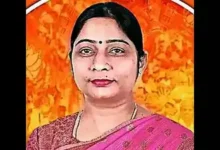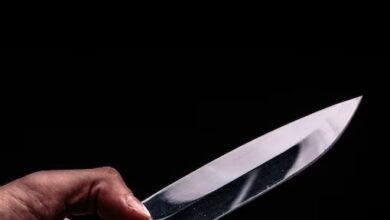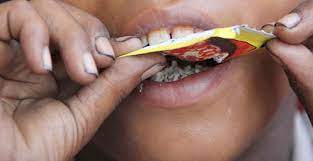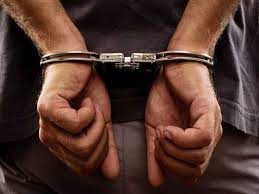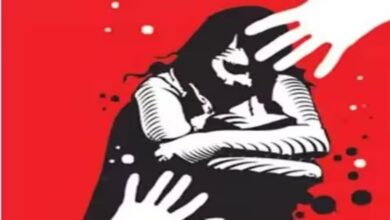Ayodhya Temple: Important Dates
In the first court case, Nirmohi Akhara mahant Raghubar Das requests permission to build a “mandap” on the platform in front of the mosque that the Mughal emperor Babur is said to have erected at Ramkot, where Lord Ram is said to have been born in 1528. February 24: Sub-judge Harikishan’s court rejects it
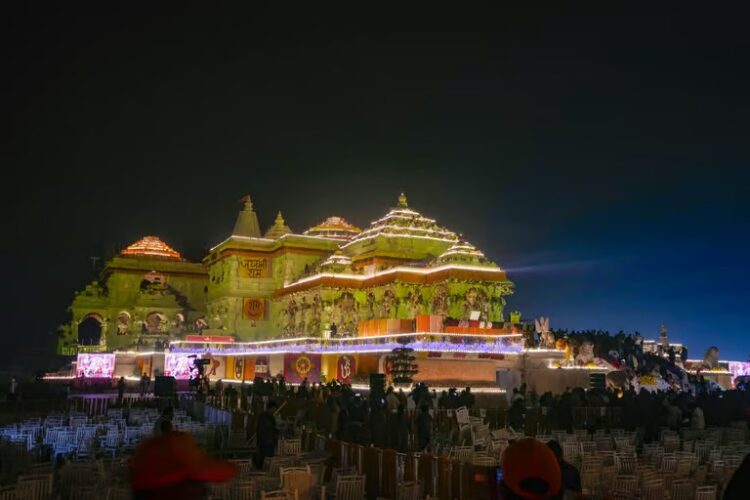
1886
Mar. 17: Raghubar Das files a district court appeal, arguing that it is too late to correct a “mistake committed over 350 years ago.” Nov. 1: Raghubar Das files an appeal with the province’s highest court, which rejects it.
1949
Dec. 22–23: Following a Ramayan paath led by Goraksha Peeth leader Mahant Digvijay Nath, an idol of Ram Lalla rises within the mosque; The Muslim side asserts that Hindu officials retained the idol; Hashim Ansari submits a Muslim side appeal.
1950
January 6: Mahant Paramhans Ramchandradas of Digambar Akhara and Gopal Singh Visharad of the Hindu Mahasabha petition the Faizabad court to be granted the privilege to worship Jan. 19: A civil court prevents the Muslim side from taking down the idol by issuing a temporary injunction.
1951
March 3: The court requests that Muslim parties refrain from interfering and issues an interim injunction for puja.
1955
April 26: Allahabad High Court upholds the March 3, 1951 decree
1959
Dec. 17: Proclaiming to be the guardian of Ram Janmasthan, Nirmohi Akhara files the third lawsuit in the case.
1961
Dec. 18: The Sunni Central Waqf Board filed a fourth lawsuit, claiming ownership of both the nearby land and the mosque’s property; Ansari is one of the six Muslim plaintiffs who are parties to the plea
1964
August 29: Master Tara Singh, the head of Akali Dal, and then-RSS president MS Golwalkar were present when the VHP was created.
1984
Apr. 7-8: Ram Janmabhoomi ‘freedom’ is raised by Dharm Sansad in Delhi.
1984
On June 18, Mahant Avaidyanath became the chairman of Ram Janmabhoomi Mukti Yagya Samiti, while Mahant Nritya Gopal Das became the vice-chairman.
1985
Sept. 18: Jagadguru Ramanandacharya forms “Sri Ram Janmabhoomi Nyas.” Shiv Ramacharya; Vishnu Hari Dalmiya designated treasurer; Ashok Singhal, then-VHP general secretary, appointed convener
1986
February 1: In response to a request from Umesh Chandra Pandey, a lawyer from Faizabad, district judge KM Pandey orders that the locks on the disputed location be opened for Hindu worshipers and permits puja inside. February 3: Hashim Ansari seeks the HC’s Lucknow bench against the directive Feb. 6: Formation of the Babri Masjid Action Committee (BMAC)
1989
Feb. 1: VHP sets Nov. 10 as the date of the temple’s founding at Prayagraj Dharm Sansad. June 8–9: For the first time, the BJP declares at its Palampur convention that it would support the Ram temple campaign, arguing that it is a “matter of faith and courts can’t decide it.” October–November: More than 30,000 Ramshilas go to Ayodhya in preparation for the Nov. 10 “shilanyas.”
1990
June: VHP determines that building on the temple will begin on October 30. The government of VP Singh starts discussions between July and October. Then, on September 25, BJP leader LK Advani launches the Rath Yatra from Somnath, with the goal of reaching Ayodhya by October 30. On October 19, the Center approves an order to acquire the disputed property and give it to RJB Nyas, but it is reclaimed within three days. Oct. 23: After that, Advani is arrested in Samastipur by Bihar Chief Minister Lalu Prasad. Oct. 30-Nov. 2: Thousands of Kar Sevaks arrive in Ayodhya to begin building a temple, causing some damage to a mosque; UP Chief Minister Mulayam Singh Yadav then directs police to fire in attempt to subdue the throng; Nov 7, 17 Kar Sevaks slain; BJP withdraws support, VP Singh government collapses, and Chandrashekhar becomes prime minister
1991
May: In the midst of the general elections, Rajiv Gandhi was slain. In UP, the BJP takes power and Kalyan Singh is appointed chief minister on September 18. The Narsimha Rao government passes the Places of Worship Act, which states that any mosque, temple, church, or other place of public worship that was in existence on August 15, 1947, will retain its religious character from that date on. In October, the Kalyan Singh government purchases 2.77 acres of land surrounding the disputed site. October 25: HC permits UP government to assume possession of acquired property, but prohibits building on the site. Nov. 2: Kalyan Singh guarantees the “structure” would be safeguarded at the National Integration Council
The Babri Masjid in Ayodhya before to its demolition on December 6, 1992 by kar sevaks.
The Babri Masjid in Ayodhya before to its demolition on December 6, 1992 by kar sevaks. (Image File | AP)
1992
The UP government began building a border wall around the contested land in February. March: RJB Nyas received 42.09 acres of property near the dispute site that had been bought in 1988–1989; After demolishing the old buildings, the area was leveled throughout the next three months. May: Muslim side approaches HC in an attempt to stop leveling 42.09 acres of land; HC declines to continue leveling; July 9: VHP continues kar sewa; building of a concrete platform next to Shilanyas site starts 15 July: High Court stops Kar Sewa and building work 15 July: Kalyan Singh files a contempt petition in the Supreme Court July 23: Construction is halted by the SC, and PM Rao calls on seers to end the impasse. 26 July: VHP suspends kar sewa for three months August: Following Rao’s declaration in Parliament that he is in communication with all parties, the PMO established an Ayodhya Cell, headed by former cabinet secretary Naresh Chandra. October: Two rounds of negotiations between BMAC and VHP are held at the PM’s request. Oct. 30: Dharm Sansad declares that the kar sewa will resume on Dec. 6 Nov. 27: The Uttar Pradesh government files an affidavit with the Supreme Court stating that no permanent construction will occur at the disputed site; Dec. 6 Dec. 3: The Supreme Court assigns an observer to Ayodhya in order to monitor the construction. Dec. 6: Thousands of people go to Ayodhya for the Kar Sewa; a disputed building is demolished, sparking widespread riots that result in the deaths of nearly 2,000 people; Kalyan Singh quits before the Centre removes his government and enacts President’s rule; By dusk, idols had been erected in the temporary tent temple; two FIRs had been filed at Ram Janmabhoomi Thana, No. 197 against hundreds of unidentified kar sevaks for demolishing the building and No. 198 against 49 well-known saffron figures, including Advani, Joshi, Uma Bharti, and Ashok Singhal. Dec. 7-8: Central troops seize control of the contentious location; Dec. 10: The Center outlaws Jamaat-e-Islami, Bajrang Dal, RSS, and VHP. Dec. 13: State Police’s CB-CID received FIR No. 198, while the CBI received FIR No. 197 in the demolition case. Dec. 15: The Center fires the BJP governments of Rajasthan, MP, and HP Dec. 16: Retired Chief Justice of the AP High Court, MS Liberhan, appointed as a one-man panel to investigate destruction; Advani and seven others transported to Lalitpur prison; It received 48 extensions before submitting its report, which it did on June 30, 2009. The original deadline was set for three months.
1993
January 7: The center purchases 67.7 acres of surrounding property. March 11: Babri demolition-related bombings in Mumbai “in retaliation” Apr 3: Ismail Faruqui challenges the purchase of land in Ayodhya before the SC
2002
February: VHP sets March 15 as the start date for building the temple again; Kar sevaks begin traveling from all around the nation to Ayodhya; The UP SP government permits a symbolic “shila pujan”; Near Godhra station, Coach No. S-6 of the Sabarmati Express conveying them to Gujarat caught fire; 58 of them burned alive, sparking Gujarat riots that killed over 1,000 lives. April: The Ayodhya title dispute is resumed by a three-judge panel of the Allahabad High Court.
2010
September 30: Hindu Mahasabha, Nirmohi Akhara, and Sunni Central Waqf Board represent Ram Lalla Virajman in the title action. The High Court issues a ruling on four of the petitions submitted. Dec: The Supreme Court ruling is being contested by the Hindu Mahasabha and the Sunni board.
2011
May: SC upholds the HC ruling
2014
May: An overwhelming majority of voters elect Narendra Modi’s government.
2017
March 21: SC says out-of-court resolution of the Ayodhya dispute is appropriate
2018
Feb. 8: The SC orders the parties to prepare their documents and declares that no further parties will be permitted to join the case. Sept. 27: The Supreme Court rejects a request from the Muslim side to transfer the 1994 Ismail Farouqui case to a larger bench; the court was led by The CJI Deepak Mishra renders a 2-1 decision. October 29: Following Justice Mishra’s retirement, the matter is taken up by a bench consisting of Justices Ranjan Gogoi, Sanjay Kishan Kaul, and KM Joseph. The hearing is postponed till January 2019.
2019
Nov. 9: In a unanimous ruling, the Supreme Court declares the contested location to be the birthplace of Lord Ram and grants Ram Lalla Virajman 2.77 acres of land. The Court also requests that the Center establish a trust within three months so that the temple may be built.
2020
August 5: PM Narendra Modi performs a Bhoomi Pujan for the Ram temple on a 2.77-acre plot of land.


